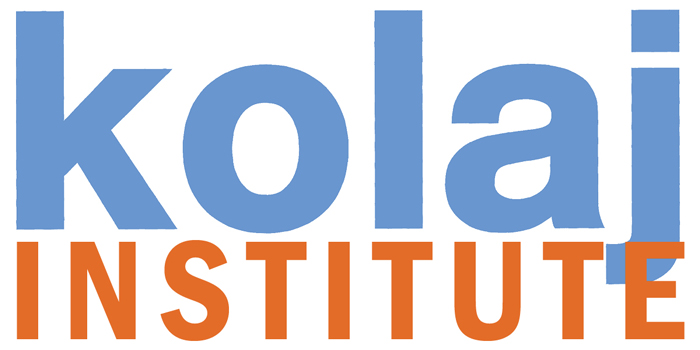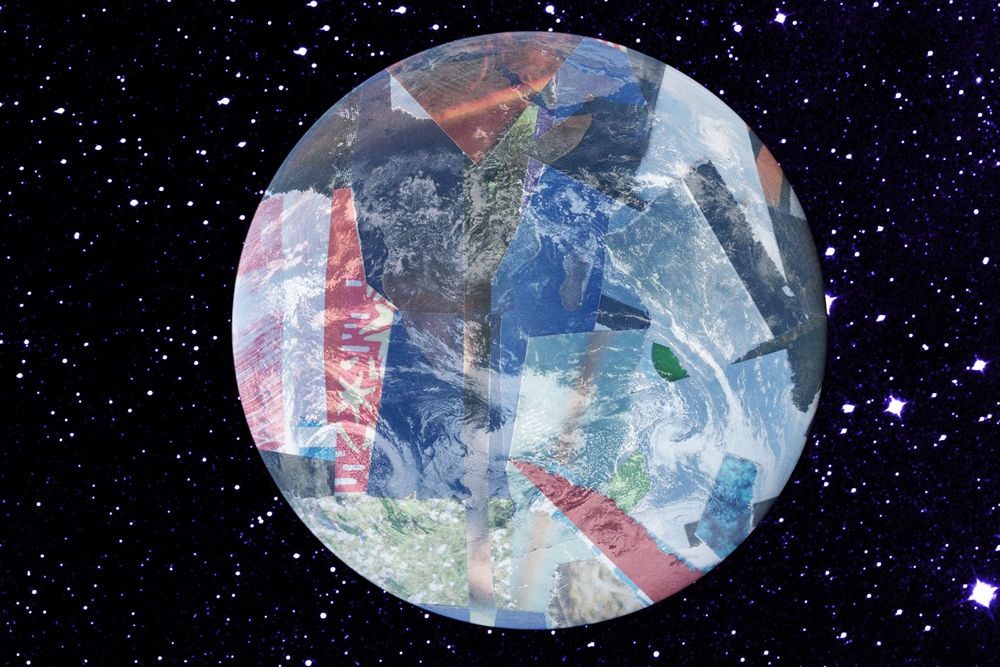
Trash as Material is a series of residencies, publications, discussions, and exhibitions that looks at how artists can use Trash to tell stories about our world.
PROJECT OVERVIEW
In October 2025, Kolaj Institute opened an inquiry into Trash as Material. We brought together six artists in New Orleans to visit The Green Project and learn about how they process unwanted building materials and waste paint. They heard from New Orleans artist Jill Stoll about her “Lost Women” series and how she makes large woven artworks using post-consumer cardboard waste. The artists made artwork that is part of the exhibition, “Trash as Material” at Kolaj Institute Gallery 25 October to 29 November 2025. A Virtual Artist Residency will take place in November & December 2025 with an eye towards a second exhibition in 2026 and a book in 2027. Trash as Material builds on Kolaj Institute’s Politics in Collage Project.
In this project, we take a liberal view of Trash and posit that Trash is an Idea, a liminal state thinking about material objects where one person sees the object as unwanted and discards it. The project is interested in the role artists play as they intercede on that liminal state and transform Trash into artist material. We are also interested in how artwork made with Trash moves through the Art Ecosystem.
CURRENT ACTIVITIES

VIRTUAL ARTIST RESIDENCY
Call to Artists
Early Deadline to Apply: Monday, 10 November 2025. A four-week, virtual collage artist residency in November and December 2025.
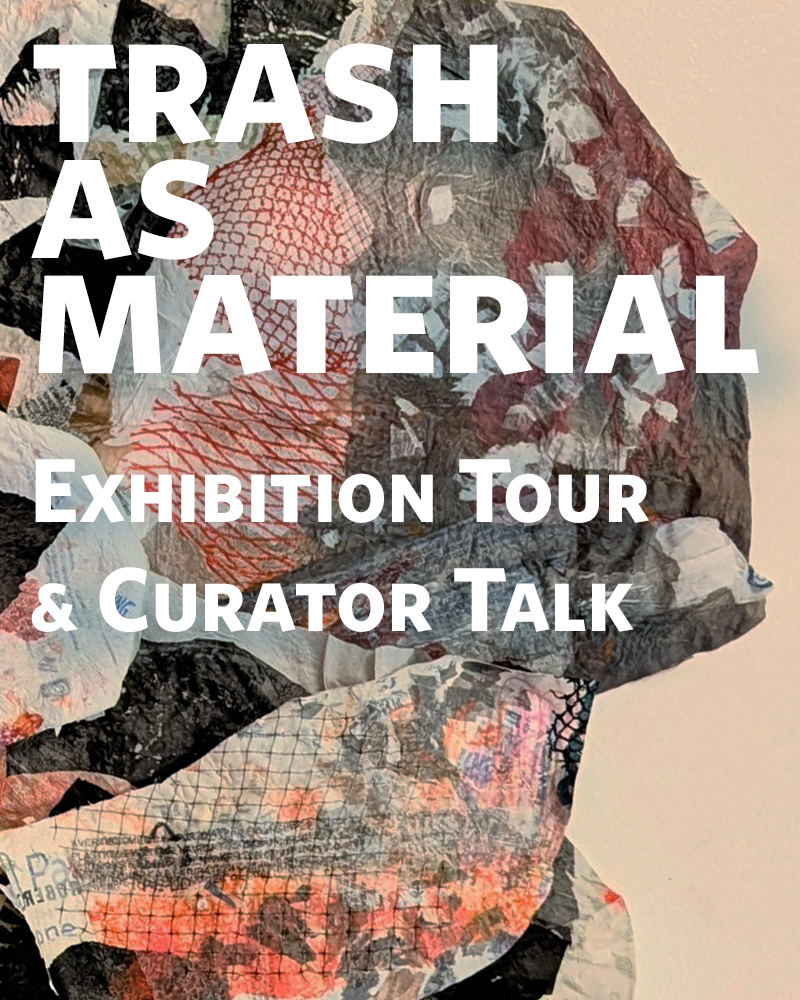
TRASH AS MATERIAL CURATOR TALK
Exhibition Tour and Curator Talk
Saturday, 6 December 2025 at 2PM at Kolaj Institute Gallery in New Orleans
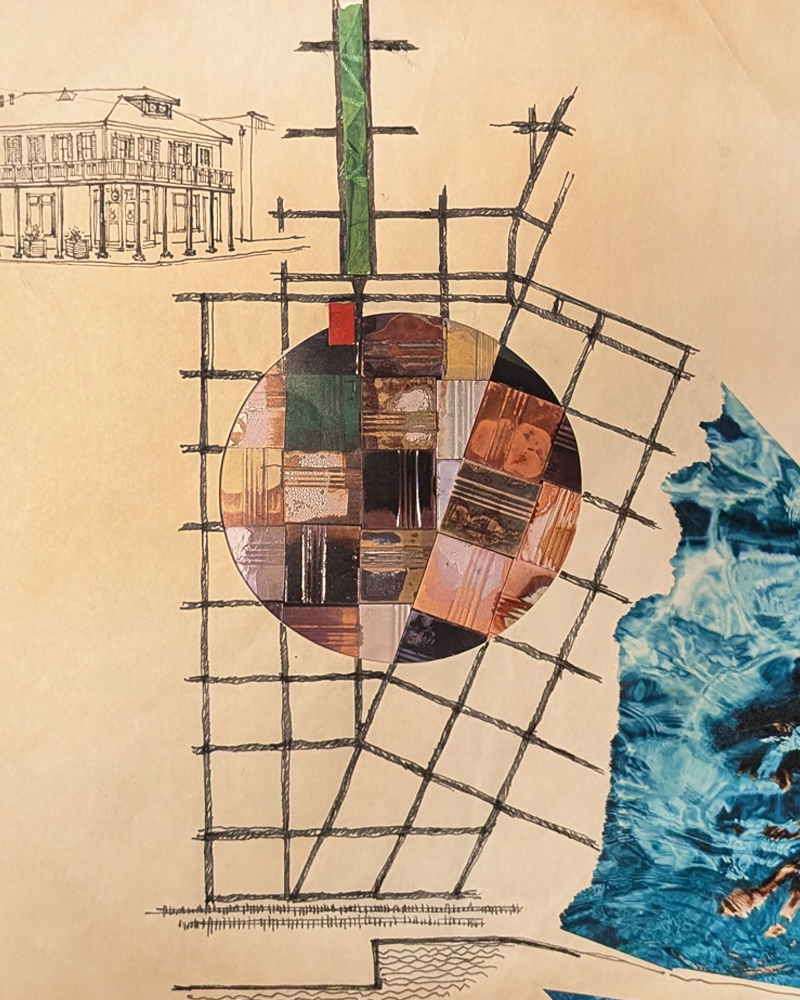
TRASH AS MATERIAL
Exhibition
at Kolaj Institute Gallery in New Orleans, Louisiana, USA, 25 October-6 December 2025
PROJECT HISTORY
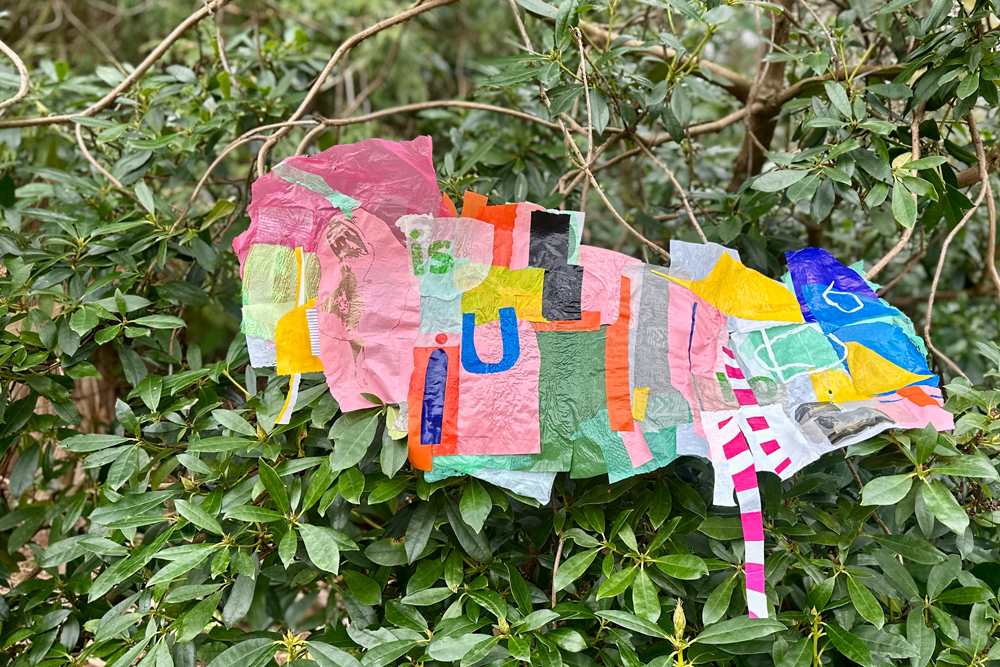
Image above: From the “Discarded and Caught” series by Jodie House
(12″x16″; photograph: locative collage; 2024-2025. Courtesy of the artist.)
IN-PERSON ARTIST RESIDENCY
Collage the Planet: Trash as Material
A five-day, in-person collage artist residency at Kolaj Institute in New Orleans, 20-24 October 2025.
During the “Collage the Planet: Trash as Material Artist Residency,” six artists came to New Orleans and developed a practice of using trash as materials and made artwork for Kolaj Institute Gallery exhibition, “Trash as Material“, 25 October-29 November 2025. They created work that explored environmentalism in art and made artwork that contributes to a broader dialogue on sustainability and ecological consciousness. They reflected on the balance between human activity and the environment and explored strategies to draw attention to issues such as climate change, biodiversity loss, and the impact of industrialization on our planet. This residency was particularly important to New Orleans, a city deeply connected to its natural surroundings and witness to ecological challenges and natural disasters that have left indelible marks on its landscape and community. Guest speakers included New Orleans collagist Jill Stoll and Erin Genrich, Environmental Education Coordinator at The Green Project.
Participating Artists: Denise Clemen (Minneapolis, Minnesota, USA); Johanna Merfeld (Great Barrington, Massachusetts, USA); Lauren Crasco (San Francisco, California, USA); Lindsay M Walker (Houston, Texas, USA); MADDY SNEEP (Austin, Texas, USA); Taeesha Muhammad (Brooklyn, New York, USA)
ARTIST RESIDENCY & EXHIBITION
Collage the Planet: Environmentalism in Art
APRIL 2024
The premise of the “Collage the Planet: Environmentalism in Art” was that science has the capacity to tell us how to care for the planet, but those solutions are meaningless if humanity doesn’t care enough to evolve and change. Art is a unique technology that can distill complexity into simple human gestures that, when experienced, facilitate a deeper understanding of our world. In short, art can be a tool for caring. Artwork by New Orleans artist Jill Stoll and Detroit, Michigan artist Jonilyn Paige spoke to themes of Trash as Material.
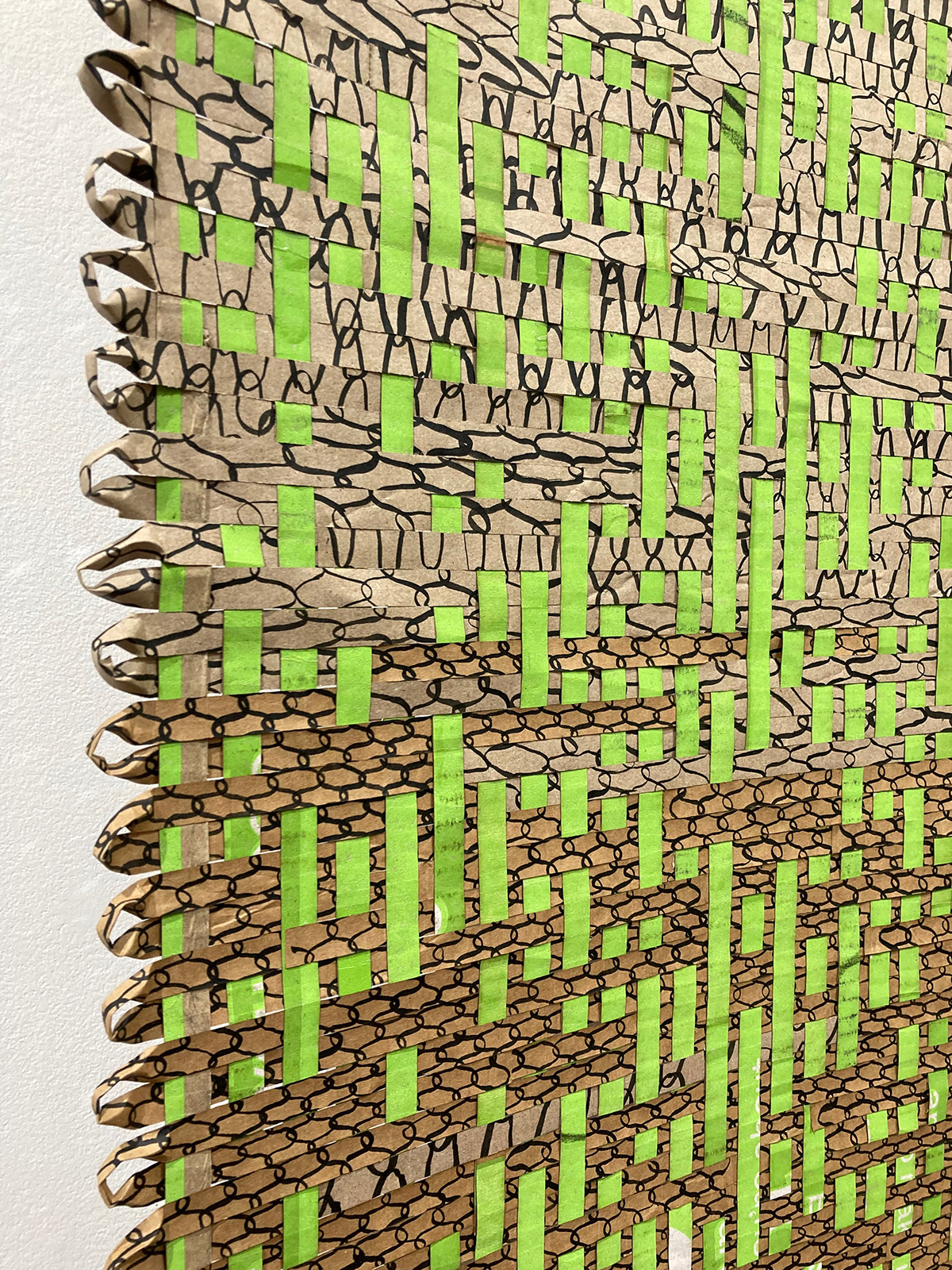
ARTWORK
Hello Fresh 4 by Jill Stoll
105″x31.25″; cardboard; 2023
New Orleans artist Jill Stoll‘s “Consumer Cloth Project” asks, “How can we reconcile our addiction to consumerism and be safekeepers of our planet at the same time?” Stoll collects cardboard waste from “bodegas and restaurant dumpsters”, trolls “the neighborhood on garbage days”, and processes this material into strips which she weaves into artworks on an improvised loom of push pins, binder clips, and glue.
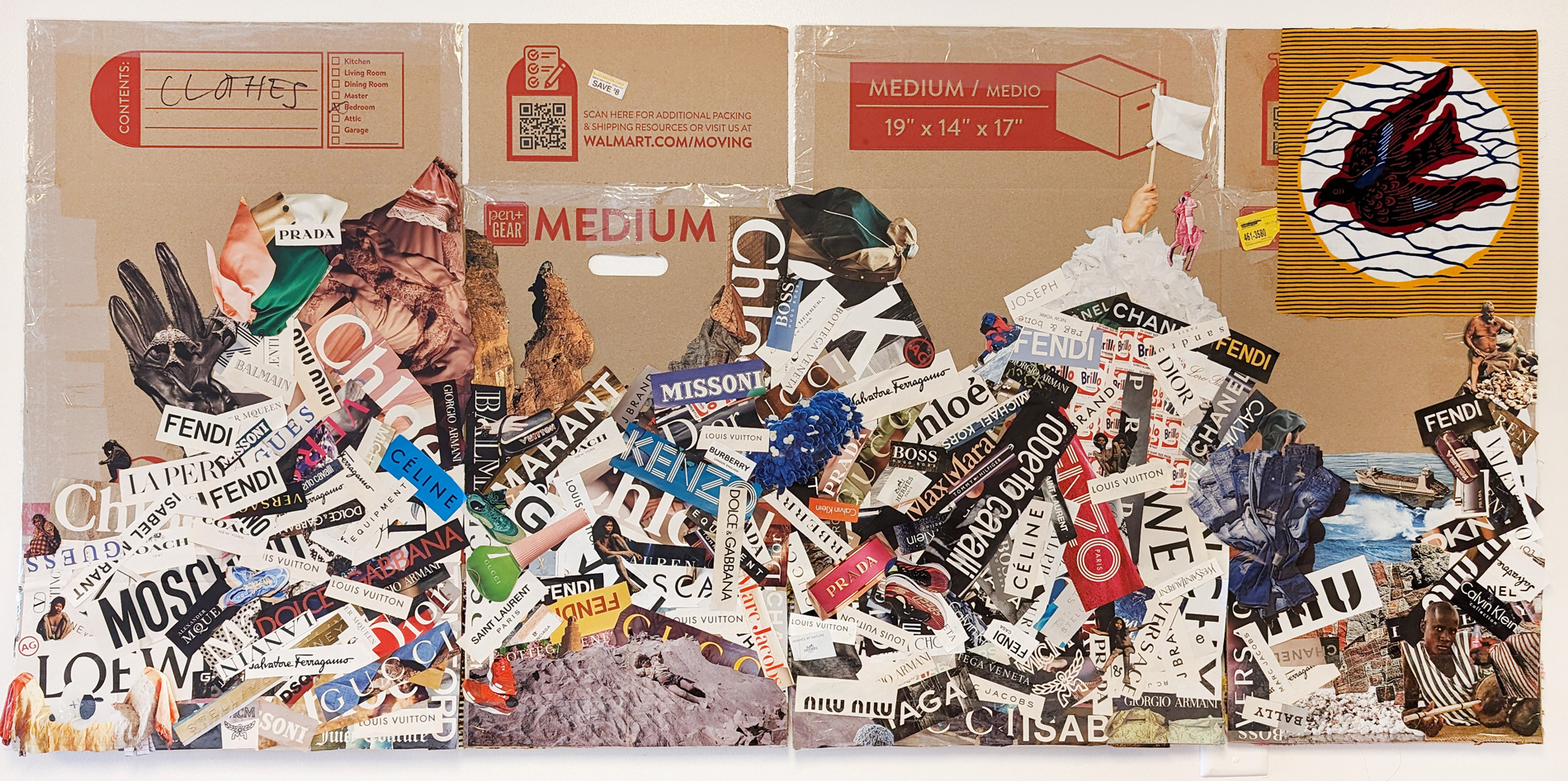
ARTWORK
Label Hoe by Jonilyn Paige
31″x66″; magazine fragments and African batik fabric on cardboard; 2024
Label Hoe is a collage of high-end fashion labels on a Walmart moving box by Detroit, Michigan artist Jonilyn Paige, who comes at this subject from a unique perspective having worked in the luxury retail industry and as a coordinator of mall operations where she observed consumerism and waste first hand. She also traveled to Windhoek, Namibia with the African Democracy Project to research Herero fashion. With this artwork, Paige speaks to issues of sustainability and consumerism and raises concern about the impact of fast fashion waste

ARTWORK
The Archaeology of Rubbish
by Ric Kasini Kadour. Exhibited in “Many Americas: Art Meets History” at the Wilson Museum of the Southern Vermont Arts Center
Inspired by Michael Thompson’s Rubbish Theory: The Creation and Destruction of Value, where the author traces the life cycle of Trash and the role museums play in defining and shaping cultural artifacts, Kadour presents a wall of objects as a comment on the role material culture plays in shaping history. The installation combines history museum objects, artworks, and found objects and invites the view to consider the significance or insignificance of each object.
